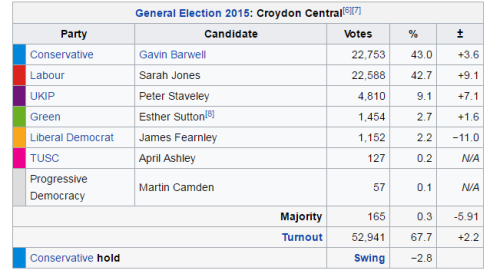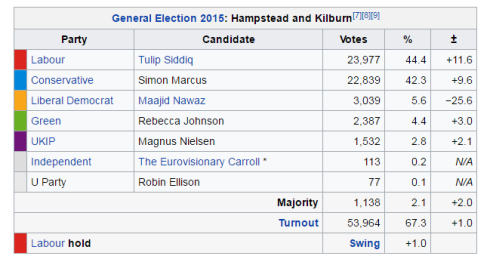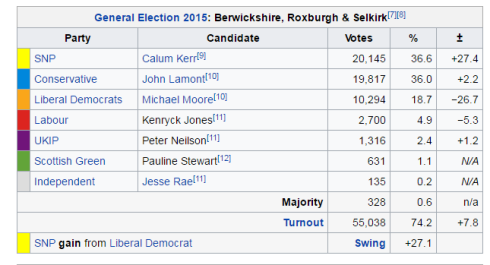Hello. You’re here because you don’t want a Tory government in the future. Maybe you’re disabled. Maybe you’re young. Maybe you’re elderly. Maybe you’re queer, or a person of colour, or poor. Maybe you’re more than one of these things. And maybe you want a fighting chance of surviving and living a good life. We know this can’t happen under the Tories. And so it’s time to exercise our pitifully feeble democratic rights and vote the fuckers out. Unfortunately, it’s not just as simple as voting Labour and enjoying the perks, and at the very least surviving. This is because the Westminster election system is, to put it kindly, a hot mess.
What’s up with our screwy electoral system?
In the UK, in Westminster, we’re don’t directly elect a Prime Minister. The Prime Minister is chosen by MPs. There are 650 seats for MPs in Westminster, with each MP for a seat chosen based on a majority of votes in their constituency. If any party gets more than half of the seats, it’s pretty easy to choose the Prime Minister: they’ll pick the leader of the party that controls more than half the seats, and nobody can do anything about voting that down.
It gets a bit more complicated if no party gets more than half of the seats. This is called a hung parliament. The last time we had this was in 2010. When there’s a hung parliament, parties need to hastily make back room deals with each other, exchanging favours so there’ll be more than half of Parliament voting for the same person as PM. There’s plenty of potential things that could be promised in these deals. In 2010, the Tories made a deal with the Lib Dems to make the Tory leader Prime Minister, in exchange for the Lib Dems occupying some roles in government.
In short, it’s the MPs that vote for the Prime Minister, not you. So to get the Tories out, what we need to shoot for is for Labour to control more than half the seats in Parliament, or for parties who aren’t the Tories to control more than half the seats in Parliament. The latter is perhaps the easier goal, again, because of our screwy electoral system where some votes matter more than others in a postcode lottery.
Why do some votes matter more than others?
Each constituency in the UK is made up of a roughly-similar-population geographical area, created by tradition, guesswork, a little bit of cheating from whoever is in government, and a healthy dash of dabbling with the occult.
In some areas, you’ll find people who would pretty much vote for a dead pig’s head if it was wearing a blue ribbon. In other areas, you’d find people who would basically vote for a jar of quince jam were it wearing a red ribbon. In these areas, which are known as safe seats, your vote doesn’t really carry much weight. Whatever you do, chances are you’ll end up with that jam jar or dead pig’s head.
In other seats, it gets a bit more exciting. These seats are called marginals, and they are much more likely to change hands. These seats are essentially kingmakers: they decide the difference, and, at the end of the day, the MPs elected there decide who’s Prime Minister. Last election, the most marginal seat was Gower, in Wales, where the Tory candidate won by just 27 votes. If just 30 more Labour voters had turned up on that day, the seat would have been controlled by Labour, not the Tories. So if you live in one of these seats, your vote is worth a lot more.
This electoral system, you might note, is massively unfair, given that some votes matter a lot more than others, depending where you live. Politicians aren’t particularly interested in changing it, as it makes their lives easier: they can target more resources in the marginal seats rather than having to bother appealing to everyone.
However, things can change, and a safe seat can become less safe, or even eventually change hands. This happened to the Lib Dems in the 2015 election, for example. They’d controlled many seats for years, and voters ended up having had enough for them: so Tories, Labour and the SNP nicked most of their seats right out from under their noses.
So, what’s tactical voting?
Tactical voting means that sometimes you’ll need to vote for the candidate most likely to win, rather than the candidate you actually want to vote for. It usually depends where you live. So, for example, some of you might live in an area where Labour don’t stand a chance of beating the Tories, but the Lib Dems might. Others might live in an area where the Lib Dems don’t stand a chance of beating the Tories, but Labour might (though I don’t much expect many Lib Dem voters will be reading my blog). Some of you might live in an area where Labour don’t stand a chance of beating the Tories, but the SNP do.
In short, you might have to make some concessions to your principles, if you want to vote the Tories out. You might need to vote in favour of an independence referendum that probably won’t happen, or for a homophobic bottom-feeder party, or for leather-patched courgette-grower.
So, in terms of voting the Tories out, here’s how we do it.
Step 1: find out what constituency you’re voting in
Your constituency will be written on your poll card. Or, if you don’t have it to hand, you can do it online, by putting in your postcode.
Step 2: find out who stands a chance in the area
There are automated online tools for figuring out your tactical voting needs, but most of these seem to have a bias towards the Lib Dems in Labour-Lib Dem marginals, and this is a problem, given the Lib Dems would likely form another coalition with the Tories so you’ve achieved the opposite of getting the Tories out. My advice is to not vote Lib Dem unless you’re in a Tory-Lib Dem marginal, and here’s why you shouldn’t be voting Lib Dem.
Besides, it’s easy to find out what sort of seat you live in, and slightly more fun.
Google [your constituency name] constituency wikipedia. The wikipedia page for each constituency gives tables with recent election results. If you look over recent years, you’ll see how much impact your vote would have, and whether you’re in a marginal or a safe seat.
Here’s an example of a safe seat: 
As you can see, Theresa May got 65.8% of the vote. The Labour candidate, the next biggest party, was almost 30,000 votes behind her. If you live in Maidenhead, it fucking sucks to be you.
Meanwhile, here’s a marginal seat:

As you can see, most people in the area are voting either Tory or Labour, and the gap between the parties is small: there’s less than 200 votes in it! If you live in a seat that looks like this, your vote matters an awful lot, and you could make it so there’s one less Tory in parliament.
Some marginals will have a larger gap: there might be a distance of 1000, or even 5,000 votes. These still matter.
Step 3: pick who to tactically vote for!
The simple rule for tactical voting is VOTE FOR YOUR LOCAL BIGGEST PARTY WHO AREN’T THE TORIES.
As I said earlier, sometimes tactical voting means you don’t get to vote for who you’d actually like to vote for. In the country as a whole, the party which is most likely to have a majority government to oust the Tories is Labour. They’ll be the party who aren’t the Tories who will have the most seats.
Now, if you’re in a safe seat like Maidenhead, you’re mostly fuck out of luck. The best you can do is try to close the gap and scare your Tory MP. It’s unlikely to unseat the incumbent, but it might remind them that they’re not completely untouchable. If you live in a Labour safe seat, like I do, you’ve got free rein, really. You can vote for who you want to vote for. I’m currently debating with myself whether to vote Labour, which will further bolster the vote share; vote Green, because the candidate is really nice and I feel like if I want to point out to my (right-ish Labour apparatchik) MP that they’d better fucking well tack left; or whether to spoil my ballot because, after all, I am an anarchist and this pitiful excuse for a democracy is truly pitiful. I want the Tories out, and my vote doesn’t mean much in getting that outcome.
If you live in a marginal seat, then VOTE FOR YOUR LOCAL BIGGEST PARTY WHO AREN’T THE TORIES.
So, for example, in the Croydon Central example above, to get the Tories out, you have to vote Labour.
Sometimes the marginals might already be held by a party who aren’t the Tories, like in the example below:

There’s a little over 1,000 votes between Labour and the Tories. If you want to keep the Tories out, you need to turn up and vote Labour.
Some of you might live in seats where it could change hands between the Tories and Lib Dems, like in the example below:

I’ve included the 2010 results too, because as you can see, it’s changed hands in the past. In a seat like Eastbourne, you need to suck up your principles and vote for the biggest party who aren’t the Tories. In this case, it’s the Lib Dems.
Sometimes, the party that might beat the Tories could be the SNP, like in the example below:

The gap in Berwickshire, Roxburgh and Selkirk is small, with the SNP having just 328 more votes than the Tories. So if you live here and want to keep the Tories out of your seat, you’d need to vote SNP.
And finally, let’s use a special example of South Thanet, where the general rule of VOTE FOR YOUR LOCAL BIGGEST PARTY WHO AREN’T THE TORIES kind of collapses. South Thanet has been a Tory seat since 2010, and because there’s barely any immigration in the area, voters are more susceptible to fibs about migration. So, in the 2015 election, the Tories won, but UKIP came second. Fucking well don’t vote UKIP under any circumstances, but also don’t vote Tory either. The UKIP vote is likely to collapse, and they’re fascists. So the biggest party that isn’t the Tories is Labour, who came second in 2010, and held the seat before that.
Step 4, the most important step: ACTUALLY SHOW UP ON THE DAY AND VOTE
This is all a fun little intellectual exercise if you don’t turn up and vote on June 8th–this Thursday.
The polling stations open at 7am and close at 10pm, so there’s time for you to fit voting in around your day. Polling stations are wheelchair accessible, and it’s OK to bring your kids. If you bring a dog, expect to have it photographed to bring joy to the world. Get in touch with your friends and families who aren’t authoritarian racists to remind them to vote, too.
You’ll be given directions to your polling station on your poll card. If you’ve lost your poll card, it doesn’t matter: you can find your polling station online. The map online is better, too.
You don’t need your poll card to vote, it just makes it a bit easier for the clerks at the polling station. When you get to the polling station, tell them your name and address, and they’ll give you your ballot.
And then it’s showtime.
Vote for your local biggest party who aren’t the Tories.
It’s a long shot, but it’s entirely possible to kick the Tories out of office with a decent turnout and some smart voting.
VOTE FOR YOUR LOCAL BIGGEST PARTY WHO AREN’T THE TORIES.
__
Enjoyed what you read? Consider becoming a Patron, or leave a tip.

